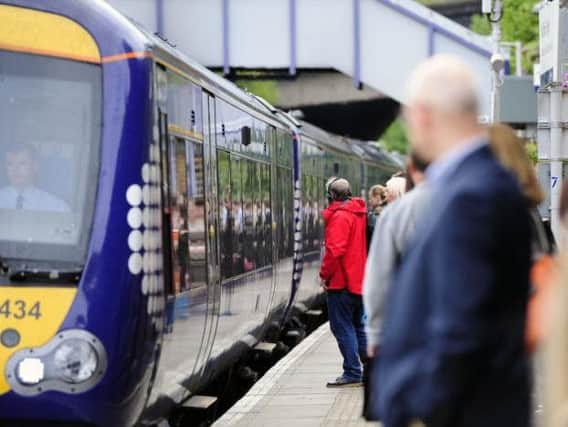Inside Transport: The truth about ScotRail masked by politics


Poor punctuality and overcrowding are easy hits for politicians, and The Scotsman has repeatedly highlighted both in the past.
Last month, we were also the first to report that ministers had demanded an improvement plan for the Borders Railway following its woeful first-year punctuality.
Advertisement
Hide AdAdvertisement
Hide AdIn fact, it turns out that the plan covers the entire ScotRail network, and I’m told it’s the first to have been issued for more than a decade.
However, rather than this being triggered by a collapse in punctuality, it involved timekeeping dropping by less than 1 percentage point.
The figure is 89.6 per cent compared to the target of 90.3 per cent. In other words, nine in ten trains arrived within five minutes of schedule (the standard measure) over the last year.
Those figures mask the best and worst performing lines. Trains from Edinburgh arrive in North Berwick within one minute of schedule - an even tighter measure - 84 per cent of the time. By contrast, nine in ten trains from Glasgow arrive late at Ardrossan Harbour. Let’s hope the Arran ferry waits for them.
However, the truth in transport often goes out the window when politics take over. It happened over last December’s closure of the Forth Road Bridge, as I related here, and I fear it’s happening again over ScotRail.
Labour last week issued a “dossier” titled “Scotfail: How the SNP took our trains off track”.
It purported to show that trains were late more often than they were are on time on one third of routes.
However, close examination showed figures for nearly half these 25 “routes” actually referred to the punctuality of between just one and three services which terminated at the station - among many other trains which called there.
Advertisement
Hide AdAdvertisement
Hide AdIt led to news stories such as “only 10 per cent of trains ran on time at stations such as Arbroath and Glasgow High Street” - when that was true of just one of dozens of trains stopping there.
Passengers should be aware of the different parties’ motivations here. Labour wants the railways re-nationalised, and vociferously opposed the Scottish Government awarding the ScotRail franchise to Dutch firm Abellio.
That’s one step further than SNP ministers, who want a public sector bid for ScotRail to be permitted - by the UK Government - when the franchise is up for grabs again in 2025.
Politics aside, ScotRail says its main problems have been the widespread disruptive effects of major work such as the Queen Street tunnel in Glasgow, and industrial action as part of the conductors’ dispute.
I’m told its improvement plan includes focusing on “golden” trains, whose lateness has the greatest impact on other services.
A campaign will be launched for both staff and passengers to get trains away on time, including closing doors earlier before departure.
Network Rail, which runs the tracks, is also now replacing equipment before it’s worn out to ensure it’ll work at its best.
However, I don’t think punctuality is commuters’ main gripe on most lines - it’s overcrowding.
Advertisement
Hide AdAdvertisement
Hide AdIn the face of increasing passenger numbers, ScotRail was stretched even before it had to provide trains for the new Borders Railway and extra carriages during the Forth Road Bridge closure.
The first of two new train fleets is still a year away, and the second may be delayed. That’s where the real pressure on ScotRail will be felt.